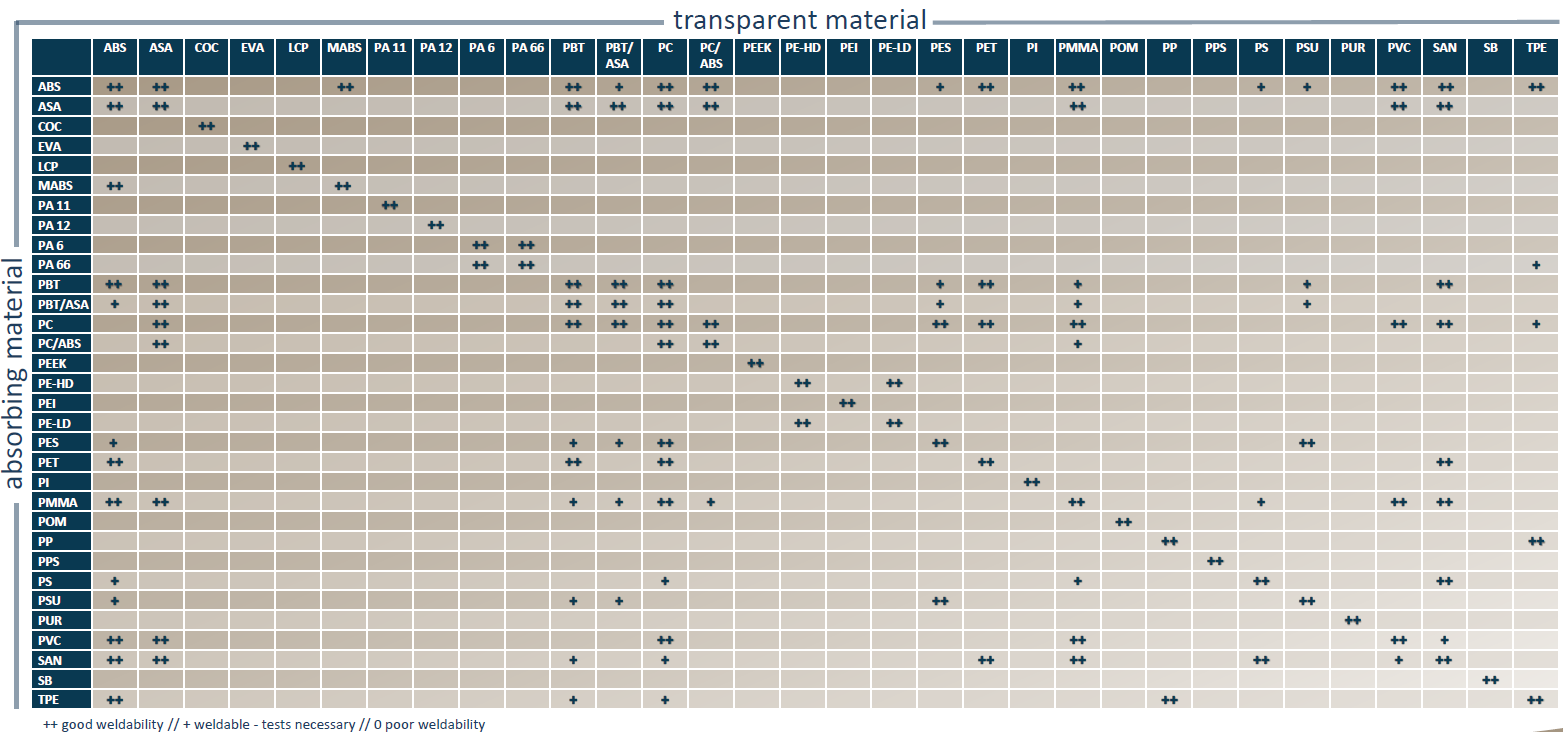Thermoplastics for laser welding – Part 1

Due to their molecular structure and the associated thermal properties, thermoplastics have a special position among polymer materials. They are both meltable and plastically formable. This behavior enables the welding of two thermoplastic polymers. However, this requires a minimum chemical and thermal compatibility of the two materials. In addition, the melting areas of the two materials to be welded must overlap. This is particularly the case when joining thermoplastics of the same type. The selection of the individual polymers for mixed material welds is much more difficult and usually requires detailed investigations.
MOLECULAR ORDER ANS TRANSMISSION – at certain wavelengths, amorphous thermoplastics absorb only a small fraction of the incident laser radiation. In contrast, the optical properties of semi-crystalline thermoplastics differ significantly from those of amorphous ones. The crystalline superstructures present there cause multiple non-directional reflection of the laser radiation (scattering). The absorption coefficient increases with increasing degree of crystallization. The reflection of IR radiation by the material itself is greater in semi-crystalline thermoplastics than in amorphous ones. The wavelengths commonly used for laser welding are also partially absorbed, reflected and scattered in an uncolored and unfilled plastic.
Plastics are rarely used in their pure form. Usually, mechanical and thermal as well as optical adjustments are made to the polymer. Part 2 of this article is devoted to this aspect.
